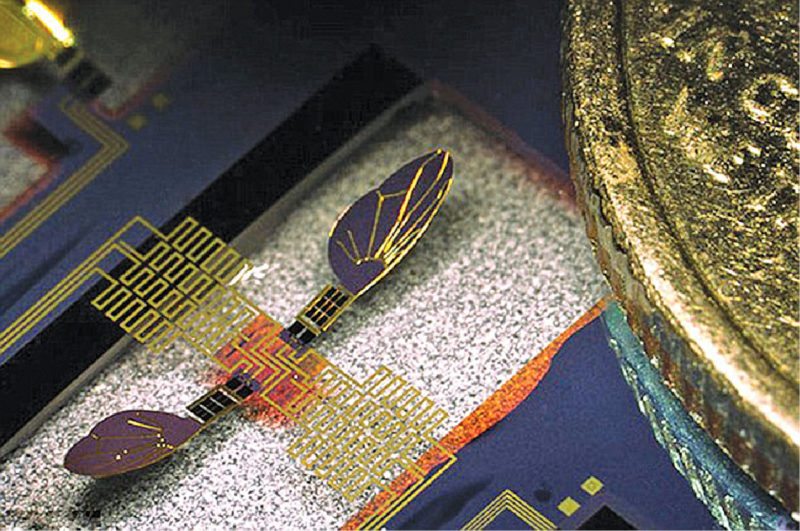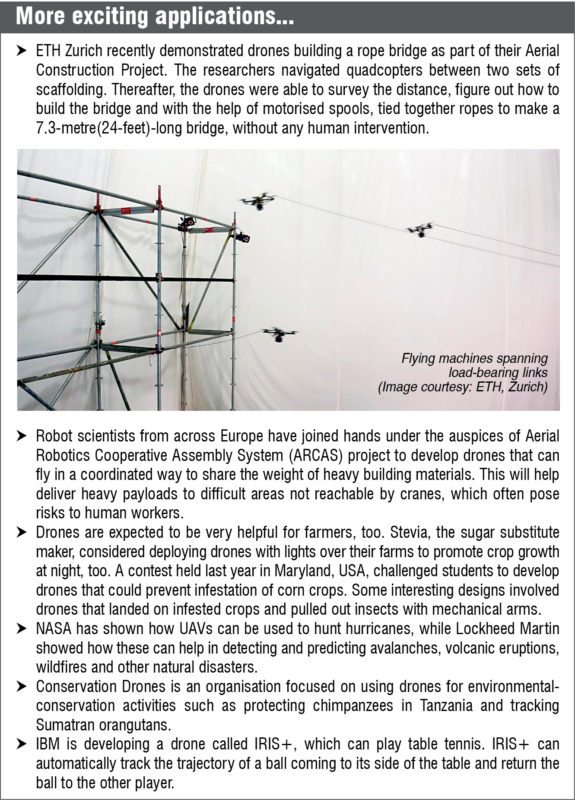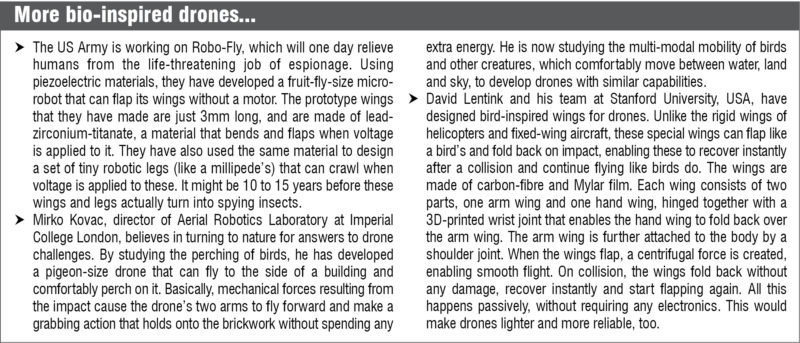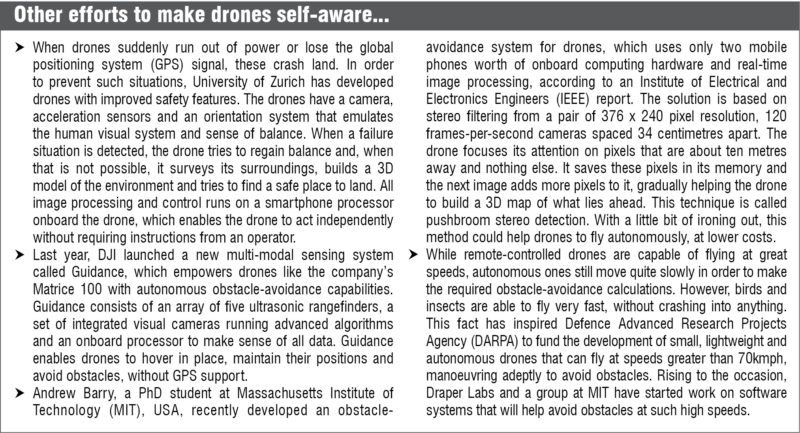When I started work on this story at the close of 2015, the USA’s Federal Aviation Administration (FAA) was voicing serious concerns about the number of drones expected to be bought by people during the 2015 Christmas sales. Ranging from simple US$ 20 toys to high-end quadcopters, FAA was expecting a million unmanned aerial vehicles (UAVs, aka drones) to be sold. The concern is palpable, because these new aircraft, if not flown responsibly, could cause a lot of trouble for airlines. So much so that FAA has launched a beta application called B4UFly, which helps drone users to abide by flying regulations, especially to stay away from prohibited zones where their little aircraft could cause harm to real big ones.
We are not sure how many drones really got sold over Christmas holidays, but it is evident that drones represent a real, solid trend. At one time, drones fell into two categories: either these were used in classified, military operations or were toys. Now their applications are more real-world.

In July 2015, a little drone flew 55km across Appalachian Mountains to deliver medical supplies to a healthcare centre in Wise County, Virginia, USA. The place is not easily accessible and doctors usually stock up for a month at a stretch, leading to a lot of waste. This FAA-approved drone delivery has seeded hope in the minds of many of the area’s citizens, who look forward to more such humanitarian drone missions.
From delivering medicines and commercial parcels to transporting organs, following clouds, spraying crops, shooting candid sports videos and surveying real estate, drones are attempting to become part and parcel of our lives, like cars and mobile devices once did. And soon these really might dot our skies, every day.
This prospect has put scientists and activists on full throttle. There is a lot of concern about the safety and privacy problems posed by these drones and the need for proper regulations to overcome these. Fortunately, there is a lot of research and development happening to make smaller, smarter, more useful drones. In this story, let us take a peek at some such won-drone-ful developments.
Drones turn into Mr Fix-Its
University of Leeds, UK, has undertaken to develop drones that can be used to autonomously fix city infrastructure such as mending potholes or changing streetlights. The idea is to have drones automatically survey the city’s infrastructure, so problems can be spotted and fixed even before these are visible to the human eye. The project will take a three-pronged approach to solving this challenge.
One area of research, dubbed as Perch and Repair, will aim to develop drones that can perch atop high structures to fix stuff like streetlights.
Another dimension is Perceive and Patch, that is, drones that can autonomously inspect, identify and repair potholes in roads.
The third is Fire and Forget robots, which can operate perpetually within live utility pipes, handling tasks like inspection, repair, metering and reporting.
The multi-million-pound project is actually deeper than it appears to be. It will involve not just advanced research in drones and robotics, but also include development of advanced simulators like airflow simulators to study air pollution, tackle the problem of aging water pipelines and more. The project will also study the environmental and social impact of having a robot workforce always on duty in the city, trying to achieve the task with minimal disturbance to the city’s dwellers.
A trick or two learnt from flies and birds
Think small, flying, fast and agile, and insects are the first creatures that come to mind. How challenging it is to vanquish a fly that irritatingly hovers around you, buzzing into your ears! So close by, yet so tough to swat. Well, it is no surprise then that with similar goals, drone researchers are turning to nature for inspiration.

Insects are able to fly swiftly in and out of even the trickiest of spaces without colliding into anything. This is a capability that UAVs must have, if these are to work autonomously and coexist with humans. One way to achieve this would be to equip the drones with digital cameras that capture a 360-degree image of what is around them. However, this goes against the form factor and weight requirements, which are critical for drones.

So scientists at Swiss Federal Institute of Technology (ETH) Zurich, Switzerland, have now developed an insect-inspired motion sensor for UAVs. The artificial eye measures just two cubic millimetres and weighs just two milligrams. It features a lens on top of all three electronic photodetectors in a triangular pattern. The device combines the measurements of these photodetectors to determine the speed and direction of any motion in its field-of-view. This is similar to how the segmented eyes of insects capture their environment to avoid obstacles.
The team has also developed algorithms to process signals from these devices, which will be programmed into onboard chips to compute relevant parameters like distance to objects, time until potential collision and so on.
The artificial eye has been tested under varied conditions like poorly-lit rooms, bright and sunny outdoor spots, and it seems poised to outdo the original itself, as results show that it is able to detect motion three times faster than actual flying insects.
Autonomy is a matter of perception
If drones are to be really useful, delivering parcels, spying enemy territories, entering danger zones ahead of fire-fighters and first-responders, and more, these need to be aware of their environment and capable of flying autonomously. Drone makers across the world are investing efforts in this direction.

Ascending Technologies, for example, has been working with Intel to develop solutions for obstacle avoidance. Intel’s RealSense 360-degree-depth camera module, which is less than four millimetre thick, weighing around eight grams, has been effectively combined with powerful microprocessors and smart algorithms to improve the perception capabilities of drones without affecting payload and flight times.
AscTec FireFly, for example, uses Intel cameras to auto-fly through forests without crashing into trees. AscTec Neo, a research UAV, which will be available in 2016, will have a more advanced sensor ring with six Intel RealSense cameras, which will give it a 360-degree view essential for autonomous navigation.
Five little drones flying in the air…
One little drone hit me on my head. Mummy called the police and the police said, “No more drones bumping on the head.”
Soon, this scene might be more real than you think. One of the biggest worries on the minds of authorities and people is the risk of drones interfering with public routine. Imagine drones disturbing the flying of real aircraft, bumping into people, crashing on windscreens of cars and so on.
While companies are trying to make drones more self-aware and safe, organisations like FAA are trying to control the flight of these little electronic birds to avoid any mishaps. FAA is taking several steps in this direction, declaring no-fly zones, putting a bar on the height within which drones can be flown, prohibiting the use of drones near airports, checking and controlling commercial usage of drones and so on.
To aid FAA in this potentially-mammoth task, NASA is developing a drone-traffic-management system that can track thousands of drones, evaluate their flight plans and control where these can or cannot go. The project involves four phases, of which the first phase is almost ready for testing by FAA. The system will use geo-fencing to prevent drones from going where these do not belong.
In a recent media report, Parimal Kopardekar, NASA’s principal investigator for drone traffic management, explained that there are two types of geo-fences; one is a no-fly-zone type, where you should not go inside the geo-fence. This will be used to keep drones away from airports, for example. The other kind of geo-fence would keep drones from getting out.
The system will enable users to file flight plans, which will be evaluated and accepted or rejected if these do not work out. Ideally, the system will also enable anybody to simply point a smartphone at a drone flying in the vicinity and find out what it is up to. This is very important to instil confidence in people and avert the risk of spying drones.
When you actually point your phone at a drone, the answer could be quite surprising, because drones are up to a lot of things today. Drones with follow-me capabilities can track players and shoot videos that will help them improve their playing.
Drones can plant seeds on high mountains and dangerous forests to improve the green cover. These can monitor farms and improve watering cycles. And well, Amazon hopes these can deliver parcels, too.
However, it is evident from the kind of research happening across the world that this is still far away. It took a long time for robots to start working cooperatively with people. So you can imagine how long it might take before drones start flying safely in the midst of people, cars, buildings and all the chaos of our cities!
Janani Gopalakrishnan Vikram is a technically-qualified freelance writer, editor and hands-on mom based in Chennai












